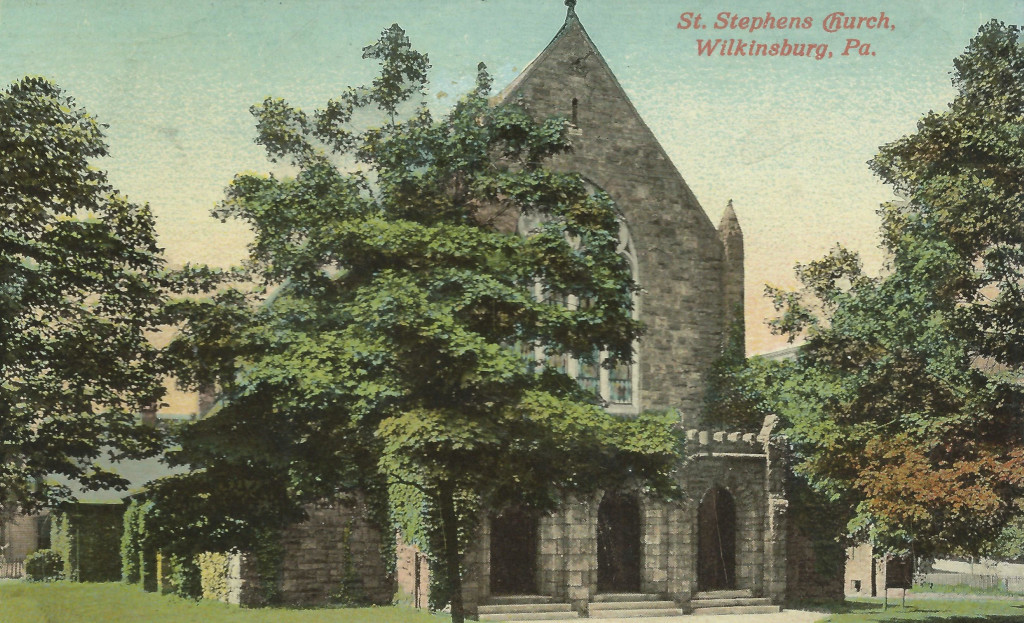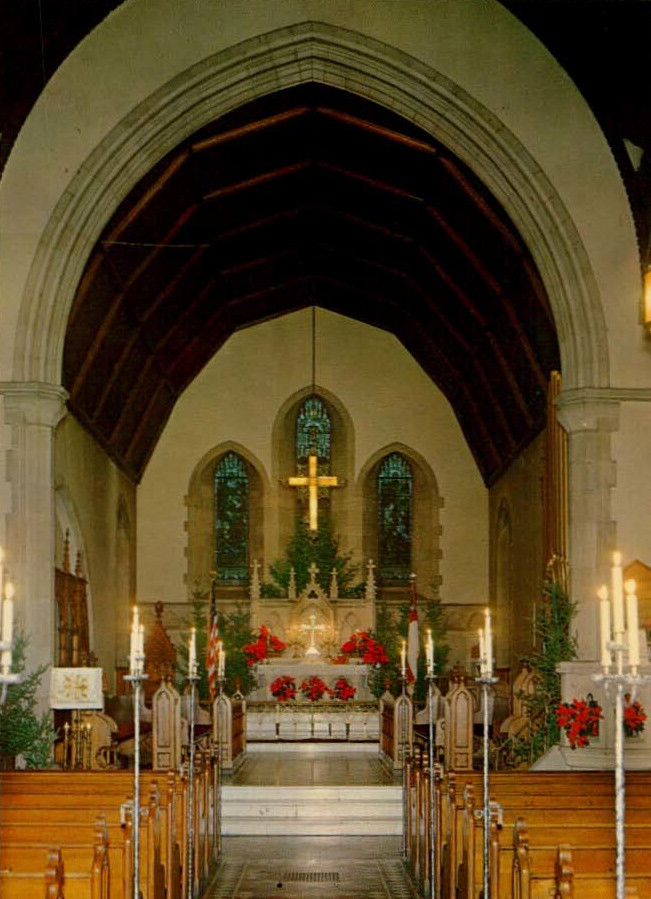Calvary Episcopal Church made repeated efforts in the 1860’s to establish a mission church in Wilkinsburg but without success. Rev. Boyd Vincent, rector at Calvary, began the organization of St. Stephen’s Episcopal Church in 1878.
Miss Mary Bennett and Mrs. David Little in 1879 organized a Sunday School with A. T. Rowand of Edgewood as the superintendent.
Small church services took place. The congregation met in the basement of the abandoned and burned out Hamilton Hall. Rev. Hodges, an assistant to Rev. Vincent at Calvary Episcopal, was assigned to St. Stephen’s. He preached his first sermon there on July 1, 1881. “A pioneer in relating religion to community life, Hodges often walked five miles to make calls on parishioners but his efforts resulted in a growing congregation.” A Christmas festival in 1881 was the last service at Hamilton Hall.
The congregation accepted an offer of a rent-free meeting space at the Brace Brothers’ Steam Laundry in Park Place.
Land for a chapel came from James Kelly who owned a major portion of Wilkinsburg. He donated a lot at Franklin Avenue, Pitt Street, and Rebecca Avenue to an organization called “The Church of the Atonement” that transferred it to Calvary Parish.
The St. Stephen’s congregation built a modest chapel on the lot at Pitt Street and Rebecca Avenue. Though the chapel windows, doors, and furniture had not yet been installed, the congregation held a Christmas Day service in 1882 with muslin covering the windows. The Annals report, “Mr. Hodges and his wife were as happy over this simple wooden building as if it had been a permanent stone church.”
With a charter granted in 1889, the church name changed from St. Stephen’s Episcopal Mission to St. Stephen’s Episcopal Church. Rev. W. C. Rodgers served as the first rector.
In 1904 congregation began meeting at the present church designed by George Nattress & Son. The chapel converted into being used as a meeting room and a gymnasium.

Saint Stephen’s has four buildings. In 1922 the congregation dedicated a choir building to Harry J. Fox, Choir director from 1908 until 1940. The building is attached on the east side of the church to the sacristy. The chapel made way for the three story Parish House built 1930. The Parish House has a Sunday School, the parish office, meeting rooms, a dining room and a kitchen, and a gymnasium. A rectory was built on donated land next to the church on Franklin Avenue.

The only major change to the church design is the All Saints Memorial chapel built in the west transept.The congregation dedicated the chapel on November 1, All Saints’ Day, 1952
The Memorial Garden along the west wall began in the fall of 1986. A plaque in the church lists the names of those whose remains are interred in the garden. The garden with a single bench offers a place for reflection.
“Our legacy, left by those who have gone before, is to serve the Lord with gladness not only among ourselves, but among the community of Wilkinsburg.”
______
Marjorie Michaux, editor-in-chief, Historic Wilkinsburg 1887–1987, One Hundred Years of Pride. Wilkinsburg Centennial Publication Committee, 1988, p. 95. Legacy quote.
Wilkinsburg Public Library Digital Archives:
“Congregation Of St. Stephen’s Once Worshipped In Laundry, Early History Interesting.” Perspective based on Frances Stewart Hall’s “St. Stephen’s Protestant Episcopal Church,” in the Annuals. Quote about Rev. Hodges being a pioneer.
“Memorial Chapel Dedicated,” November 20, 1952.